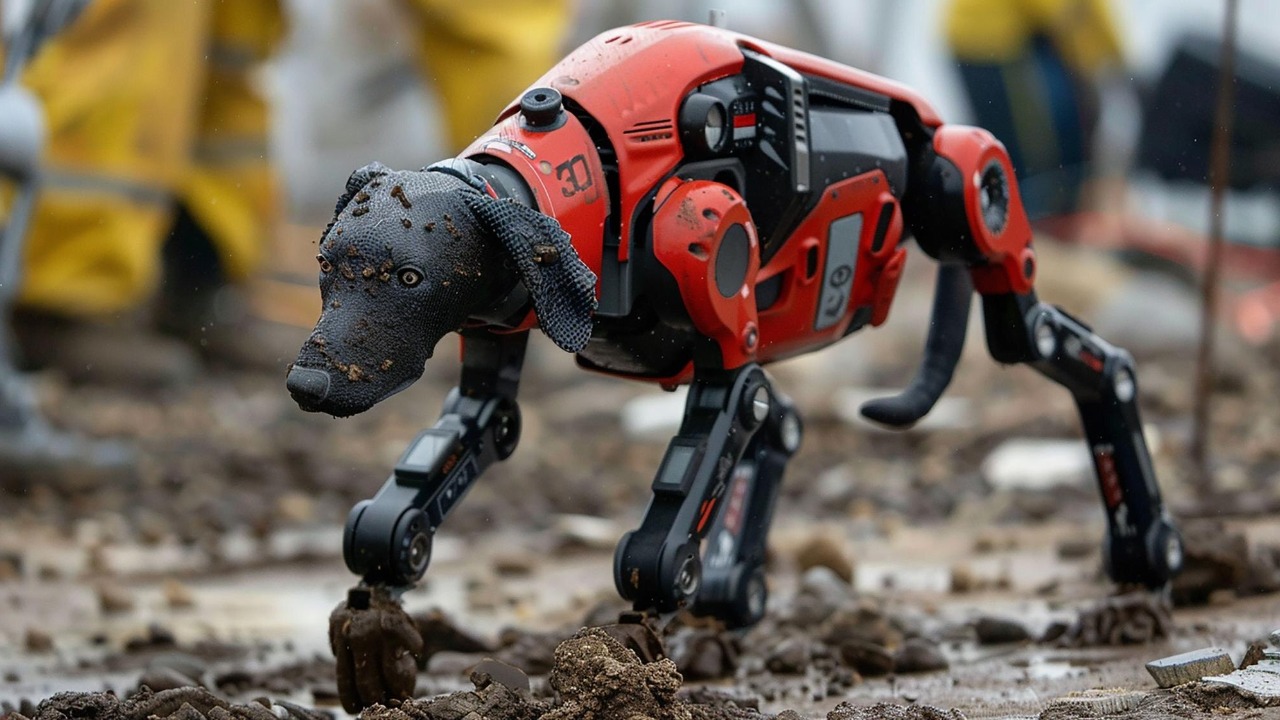
In a pioneering move, Chinese firefighters have started to employ robot dogs fitted with large hoses to tackle fires in high-risk situations. These agile, four-legged robotic units are designed to navigate tight spaces, enabling operators to direct powerful jets of water from a safe distance, thereby reducing human exposure to flames and toxic fumes. This innovative approach represents a significant leap forward in firefighting technology, particularly in addressing the urban and industrial challenges faced in China.
Origins of the Robot Dog Technology
The inception of quadruped robots in China has its roots in military and search-and-rescue applications. However, recent advancements have seen these prototypes adapted for firefighting purposes. The engineering feat of attaching large hoses to these robot dogs is a marvel in itself. The hoses are designed to deliver high-pressure water without compromising the mobility of the robots, a critical factor in their effectiveness.
Several organizations and teams in China have been instrumental in prototyping these units. A key aspect of their design is the integration of artificial intelligence (AI) for navigation in smoke-filled environments, a feature that significantly enhances their operational efficiency in firefighting scenarios.
Deployment in Chinese Firefighting Operations
The robot dogs have already seen action in Chinese firefighting operations. They have been deployed in hard-to-reach fire zones, demonstrating their ability to access areas that would be challenging for human firefighters. The training protocols for human operators controlling these robots remotely are rigorous, ensuring precise targeting of fire sources.
Metrics on response times have shown significant improvements with the use of these robots. For instance, they have enabled faster containment in warehouse and high-rise fires, highlighting their potential to revolutionize firefighting operations.
Technical Specifications and Capabilities
The robot dogs boast impressive technical specifications. Their load-bearing capacity allows them to carry heavy hoses, while their battery life ensures they can operate during extended firefighting operations. The hose attachment mechanisms include quick-release systems, enabling operators to switch between water, foam, or chemical suppressants as required.
Moreover, the robots are equipped with a range of sensors, including thermal imaging and gas detection capabilities. These features enable the robots to operate autonomously in hazardous conditions, further reducing the risk to human firefighters.
Advantages Over Traditional Methods
The use of robot dogs in firefighting offers several advantages over traditional methods. By handling initial suppression in extreme heat or structurally unstable environments, they significantly reduce risks to human firefighters. Efficiency gains are also notable, with the robots capable of delivering a larger volume of water per minute compared to manual hose operations in similar setups.
Furthermore, the precise application of water by these robots minimizes waste, offering environmental benefits in urban firefighting contexts.
Challenges and Limitations Encountered
Despite their advantages, the use of robot dogs in firefighting has encountered some challenges. Terrain limitations, for instance, can pose difficulties, with the robots’ legs potentially struggling in debris-heavy environments. Additionally, the hoses and robotic joints require maintenance after exposure to high temperatures and corrosive elements.
Regulatory and safety concerns also need to be addressed as the use of these robots expands across Chinese fire departments. Ensuring the safe and effective operation of these units is paramount to their successful integration into firefighting operations.
Future Prospects and Global Influence
Looking ahead, there is potential for further advancements in this technology. The integration of advanced AI for predictive fire behavior analysis during deployments could enhance the effectiveness of these robots. This Chinese innovation could also influence international firefighting standards, opening up possibilities for export or collaboration.
Ongoing research and development efforts are likely to focus on enhancing the endurance of the robots for longer missions, based on feedback from initial field deployments. As such, the future of firefighting could well be shaped by these remarkable robot dogs.
More from MorningOverview